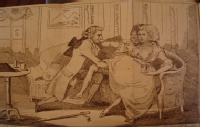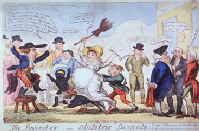PhD Abstract
Abstract
‘Fuzzy Theory and Women Writers in the Late Eighteenth Century’ contends that women writers require more careful critical treatment, and suggests that critics are still bound by the outdated logic of the Law of the Excluded Middle. This law, first formulated by Aristotle, and developed by Gottfried Leibniz in the early eighteenth century, indicates that where there are two contradictory prepositions, one must be true and the other false; a female writer must, therefore, either be feminine or masculine, conservative or radical. The twentieth century concept of Fuzzy logic, however, helped mathematicians and engineers to manage reasoning that was only approximate, rather than exact. Borrowing from this, the thesis will employ the Fuzzy Set Theory, which permits the gradual assessment of elements in a set, rather than relying on elements that are assessed in binaric terms (the principle of bivalence, or, contradiction). Put simply, the Fuzzy Set Theory does away with binaries, the Law of the Excluded Middle, and the Law of Contradiction, allowing subjects to be imprecise, and changeable. Thus, each chapter will construct a Fuzzy Set by which a variety of eighteenth century debates, with which women writers engaged, can be examined. The thesis will show that all such concepts are subjective and unstable—changeable and open to personal interpretation, and will discuss such writers as Mary Wollstonecraft, Catherine Macaulay, Charlotte Smith, Anna Letitia Barbauld, Mary Hays, Lucy Aikin, Hannah More and Joanna Southcott.
Chapter Outline:
Chapter 1: 'The Unsex'd Females': the Law of the Exluded Middle, Fuzzy Set Theory and the Heterosexual Matrix
Chapter 2: 'From myself another self I turned': the Representation of Queen Elizabeth by Unmarried Women Writers
Chapter 3: A Fuzzy Debate: Man-Midwives, Old Women, Women Writers and the Case of Nature verses Medicine
Chapter 4: 'To Bruise the Serpent's Head': Hannah More, Joanna Southcott and New Eve,


